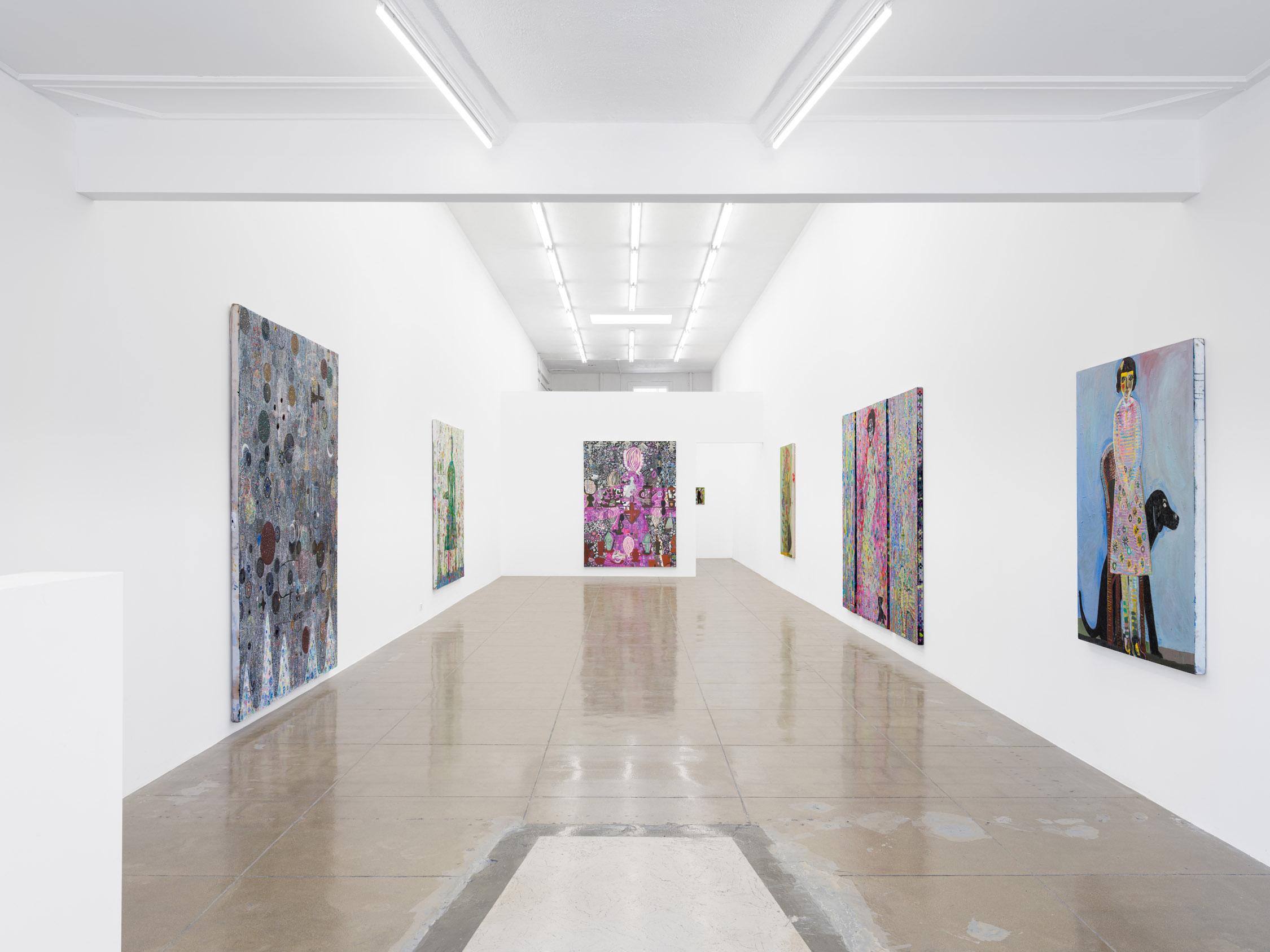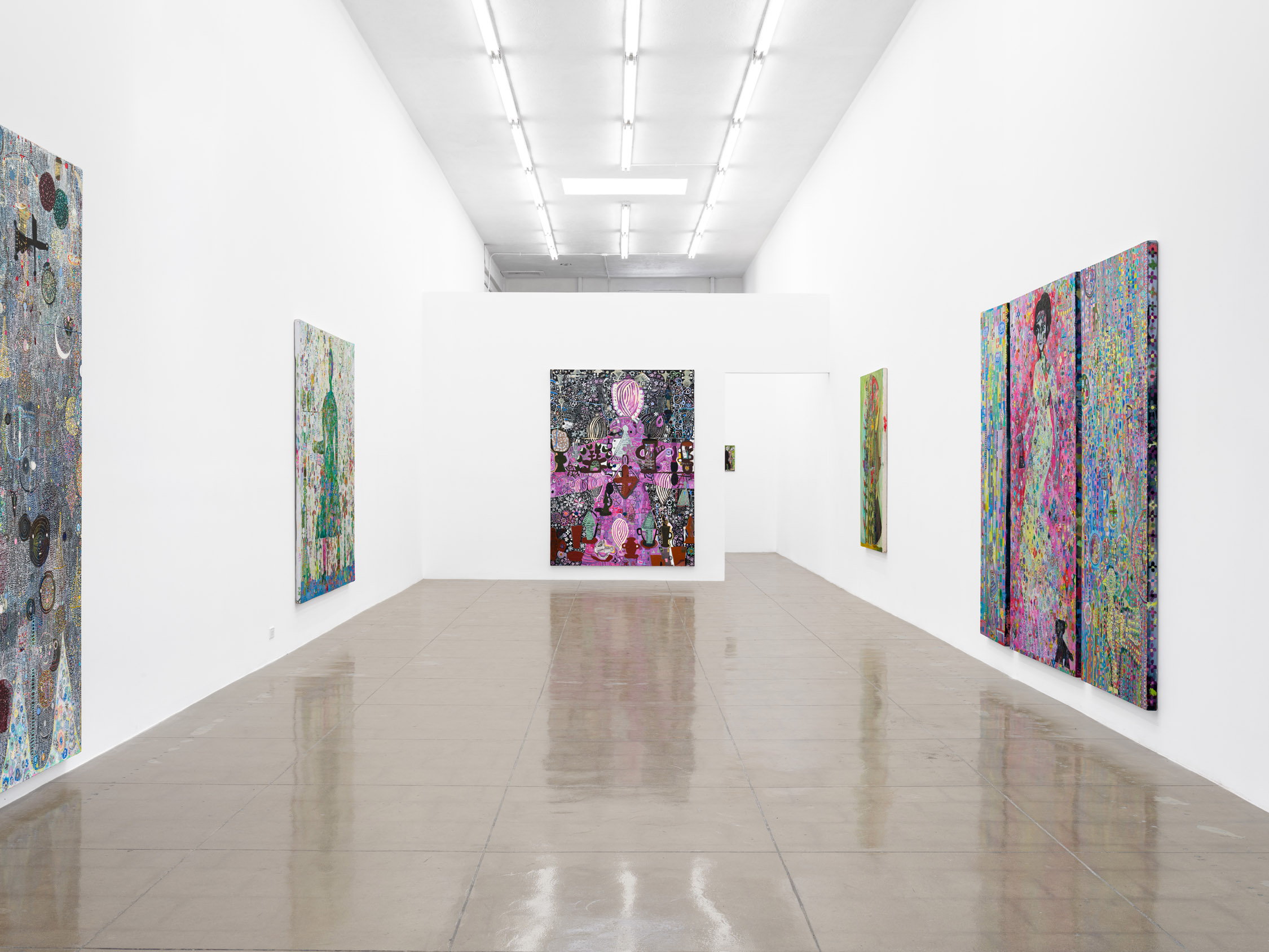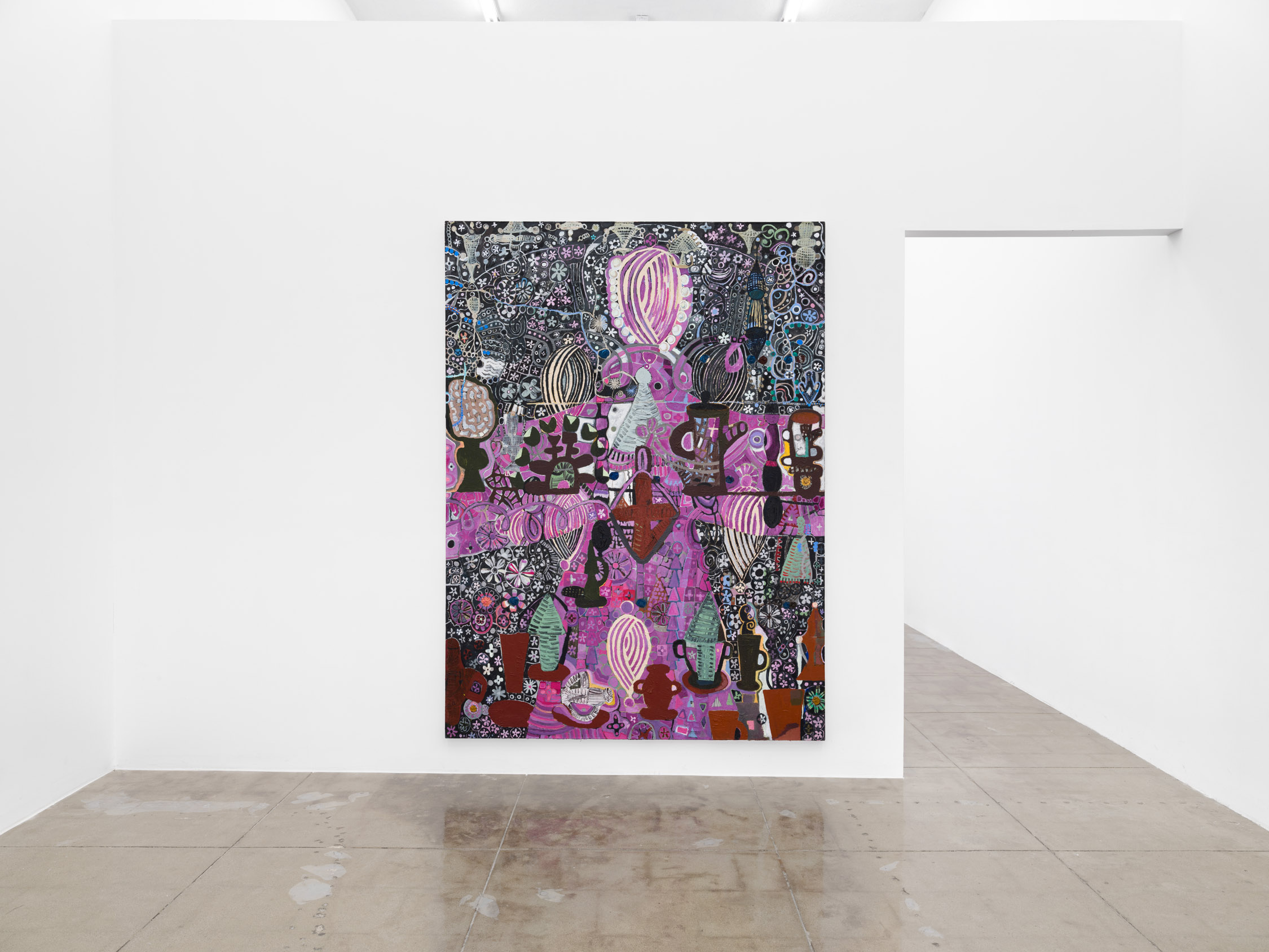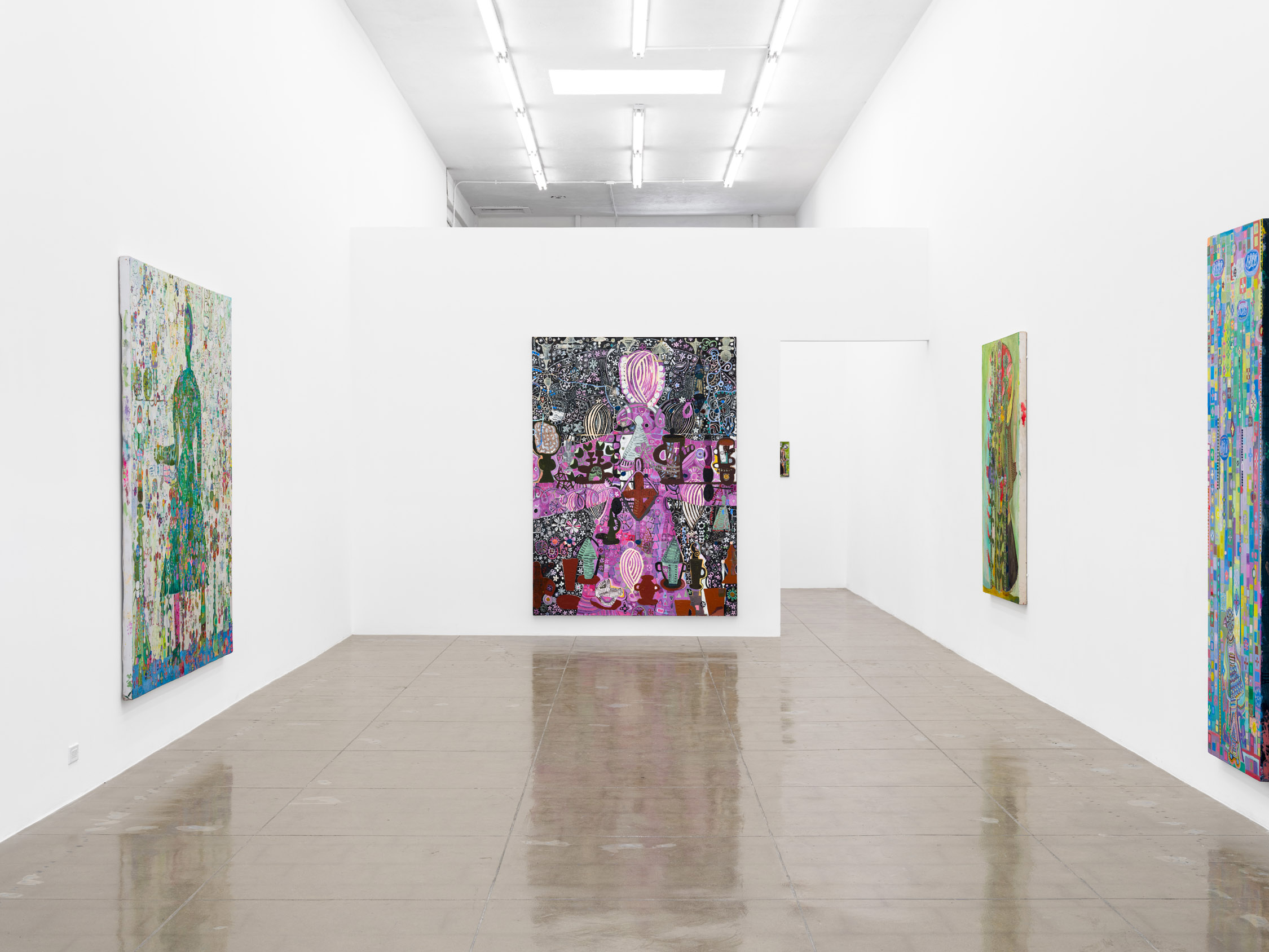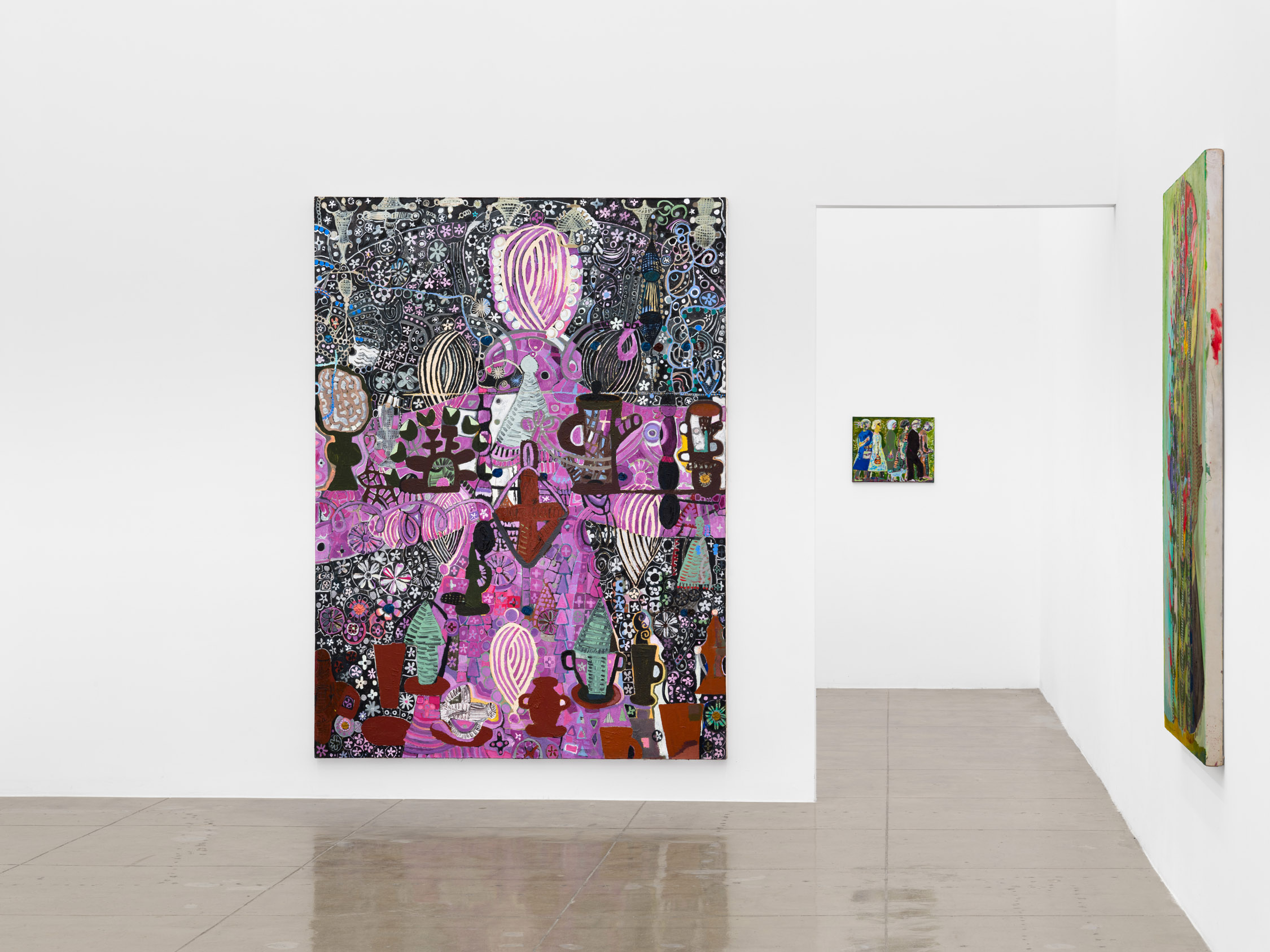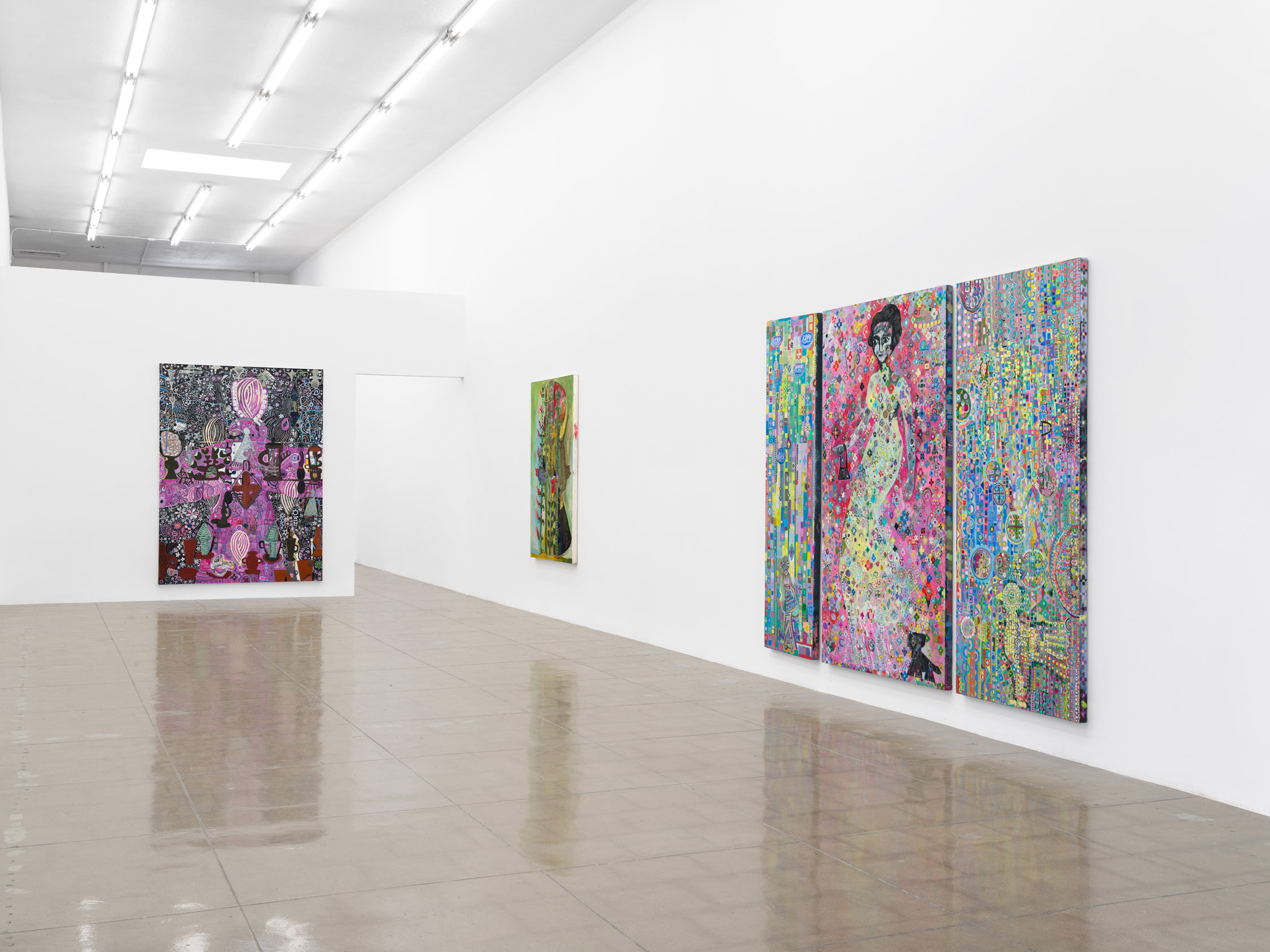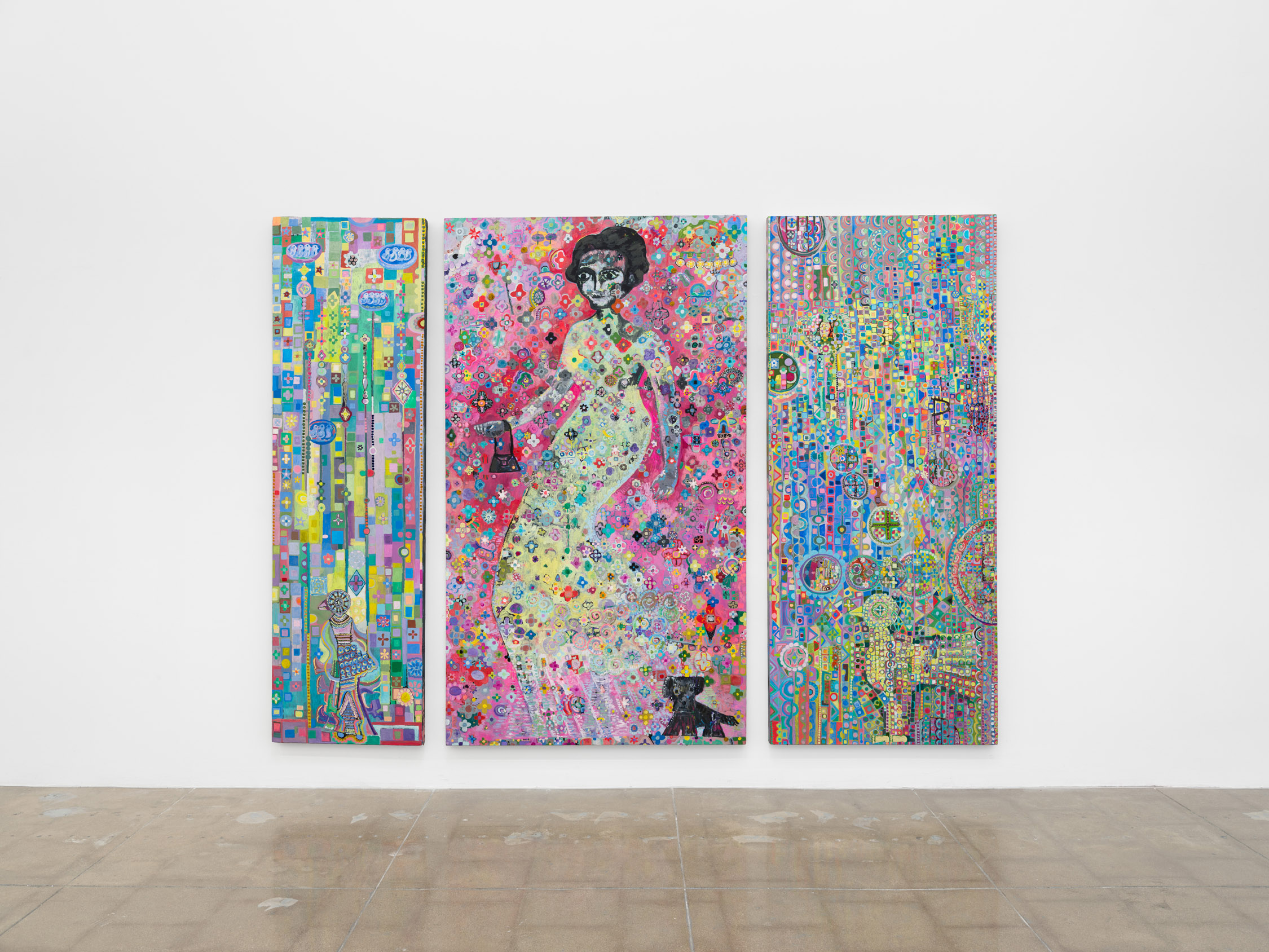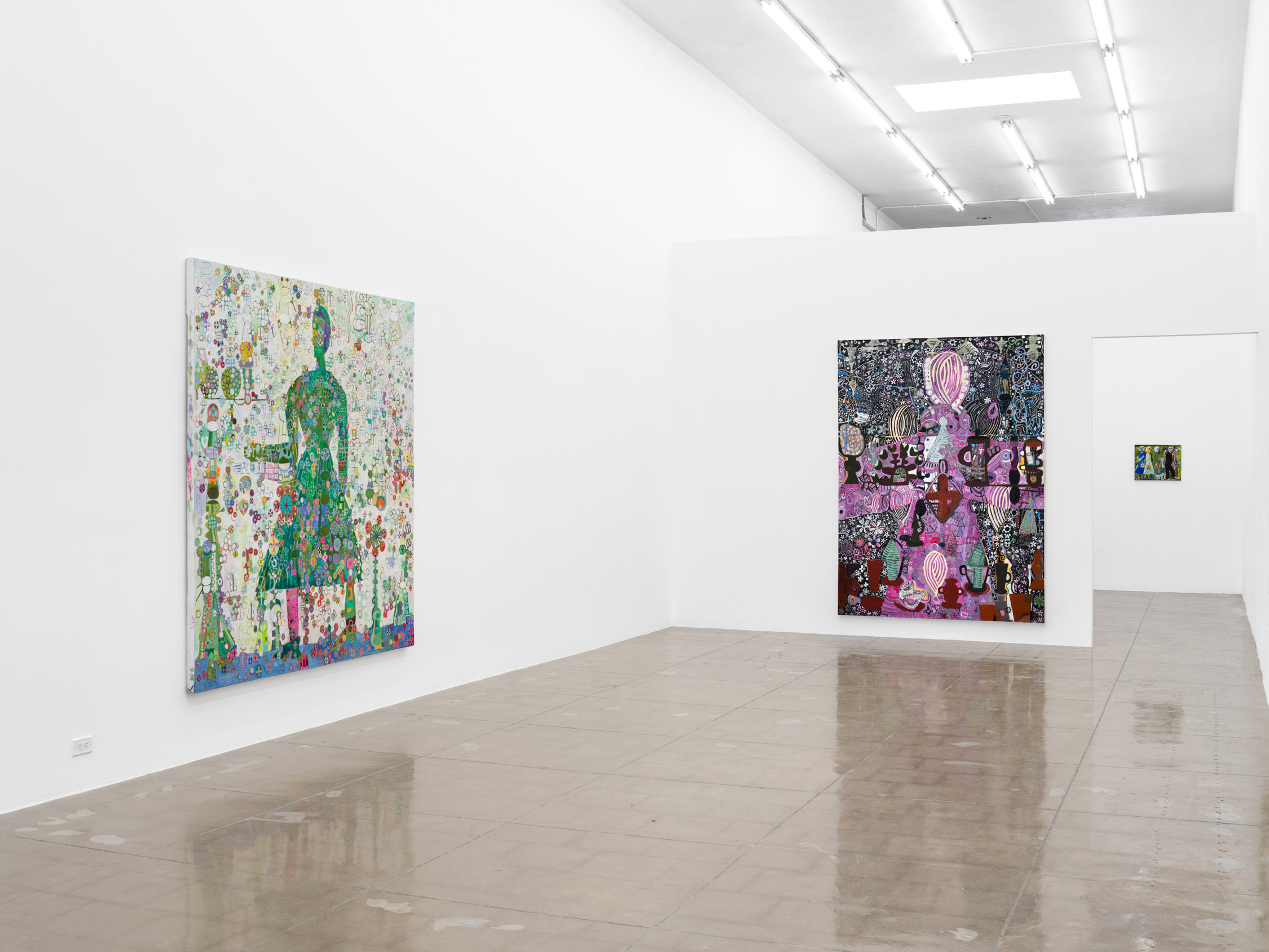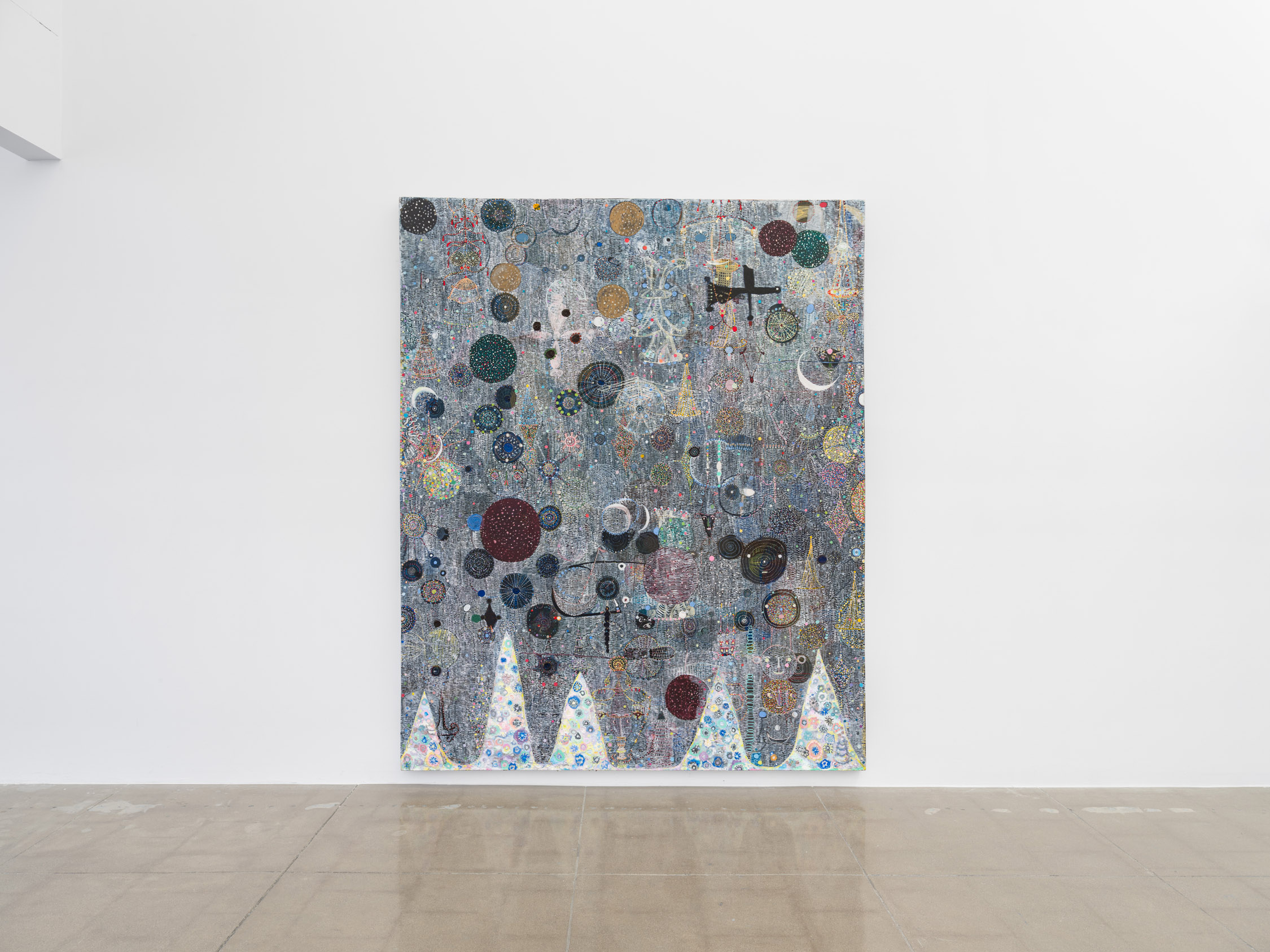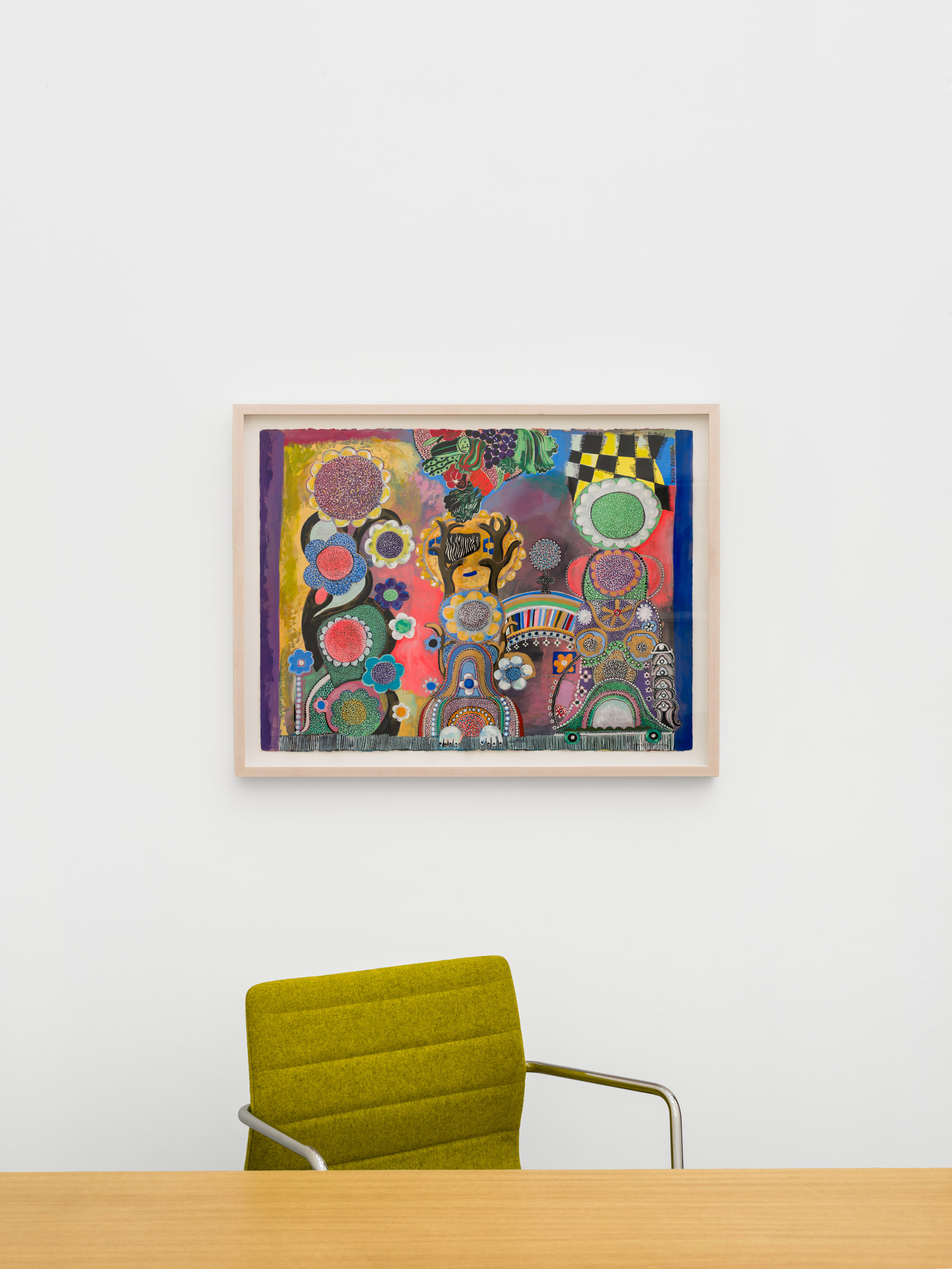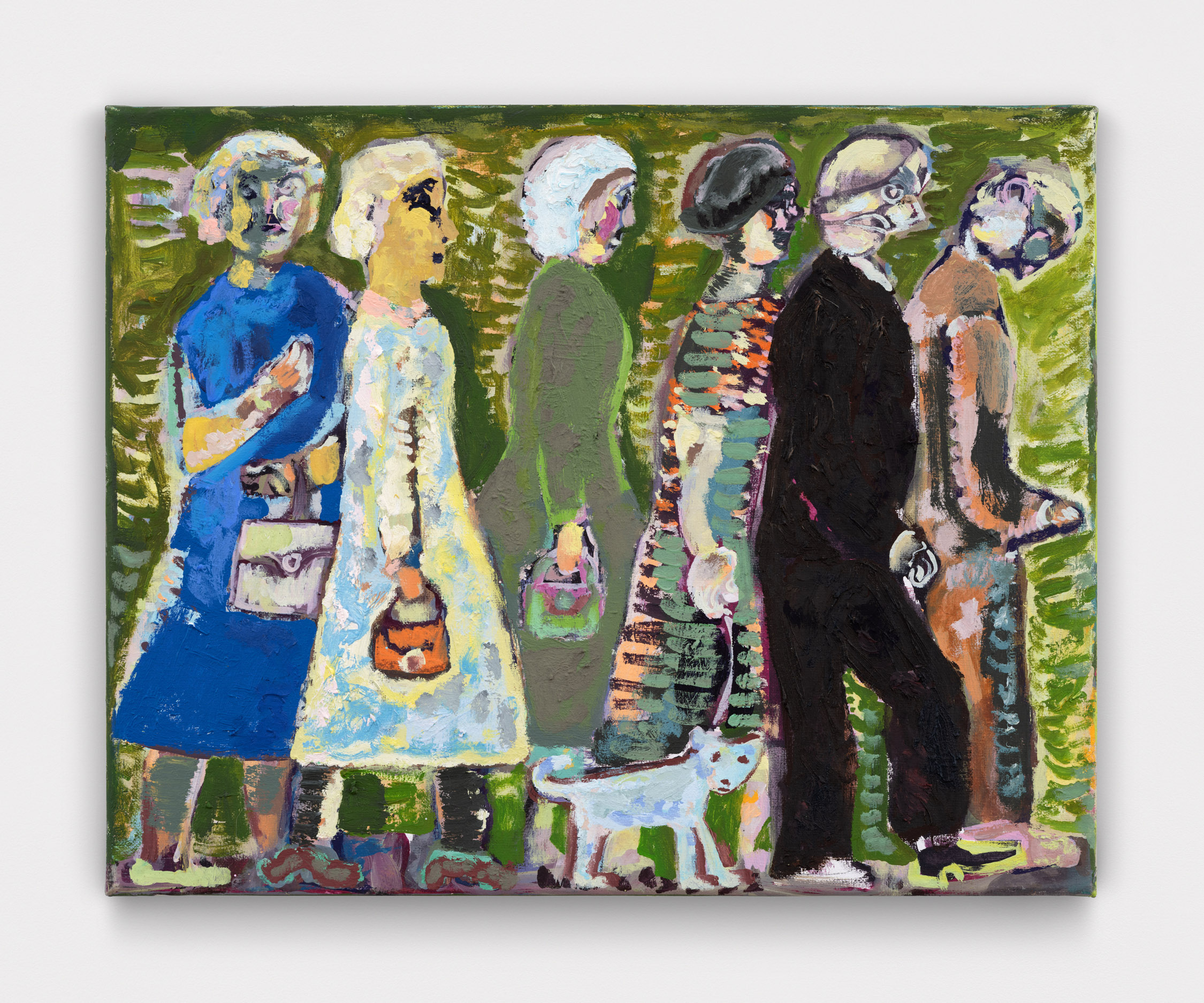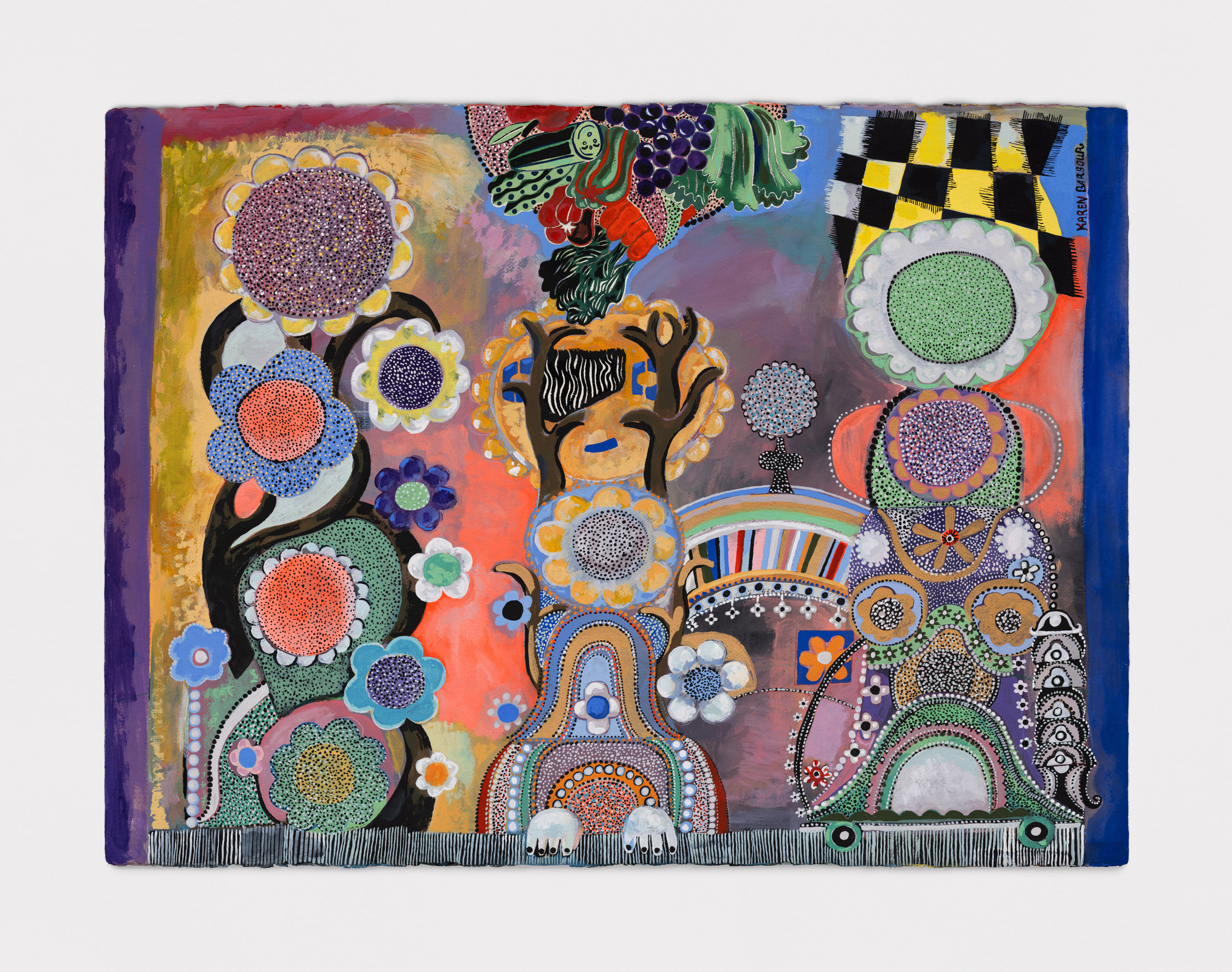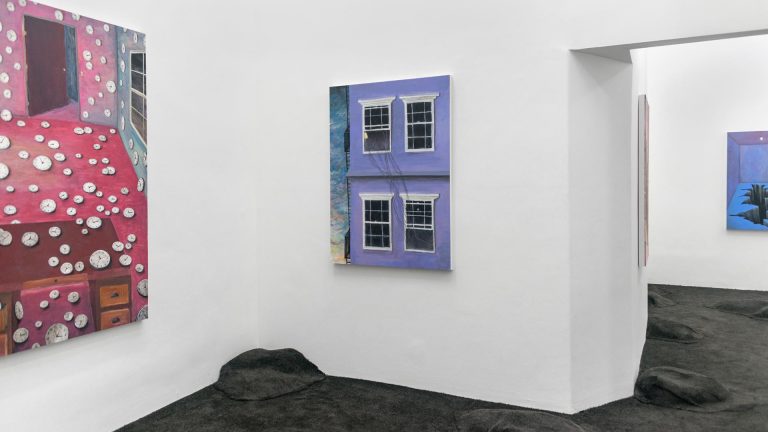Artist: Karen Barbour
Exhibition title: Turn Off to Dark Nothing
Venue: Harkawik, Los Angeles, US
Date: April 19 – May 25, 2024
Photography: all images are copyrighted. Courtesy of the artist and Harkawik, New York/Los Angeles
Harkawik is thrilled to announce our first exhibition with Bay Area painter Karen Barbour, opening this coming Friday, April 19 from 6 to 9 pm at our Hollywood location.
There’s an old worn armchair on the porch of the barnlike building in Inverness, CA, where Karen Barbour paints. It looks out at the countryside, absolutely wrecked, foam bursting from the seams, as if delineating an contemplative activity that is somehow occurring in the absence of any specific person. The ideal way to encounter Barbour’s paintings is certainly here, where they exist as the same sort of evidence—not as a discrete, finite things to be experienced, examined and unpacked, but as humble records of her activity; things that are here today, but might be wiped away tomorrow. When Barbour speaks about her work, she uses the language of motion, of change and activity, describing a process of coaxing figures forward from the ether of her abstractions. Turn Off to Dark Nothing is an exhibition that works in a similar way; these paintings are excavated from their environment, coaxed into the gallery. They bring with them a dazzling hallucination, a private language pieced together through a relentless spiritual pursuit, and an index of seemingly endless revisions, propositions, and barely-perceptible apparitions that thoroughly attenuate our perceptual faculties.
While all the works in this exhibition were completed in 2024, several were developed over a period of almost 40 years. Woman in a Green Dress, full of coruscating pinwheel-like forms, was primarily purple, then primarily green, then, finally, white. Its regions of color exist as memories of full-scale paintings locked away beneath successive layers, and its blocky central figure is made whole by way of a process of continual modulation of what is revealed, and what is hidden. What’s at stake in a work created over such a long span of time? For one thing, an assumption about change, about upheaval and reorientation. Barbour doesn’t just paint over old works; rather, she cuts into finished paintings as if they’re blank canvases, using their existing composition as a kind of baseline. In other cases, she accumulates marks slowly, noting their effect, but never committing to its totality. Indeed, looking at anything long enough is a surefire way to make it disappear. Here, we must consider that the artist’s intent, her sense of herself and what it means to paint, has changed entirely during the process of creating one work. In a way, we are seeing various moments in Barbour’s life folded over onto one another. The effect is profoundly moving.
Double Consciousness is a painting that exists gracefully at the intersection of Barbour’s more all-over works and those that contain a central composition. The addition of centipede-like feet to the bottom of a gown are all that’s needed to let us know this festooned tower is a person. The brilliance of her additive compositional method is seen in a tiny patch of night sky, carved out of the negative space between branches and something that might be a pincushion. In Daisy and Charles Wallace (a “Wrinkle in Time” reference, perhaps?), Barbour’s daughter, the artist Daisy May Sheff, stares placidly, her Matisse-like face betraying a range of subtle emotions. Her outfit was modified over the course of many years and became a sort of paper-doll or dress pattern, picking up the cone-like base of Starry Heavens Above (those cones, by the way, were at one time people peering up at the heavens). In the background is a chair, the sort that, says Barbour, were typical to her family, and “always falling apart.”
Starry Heavens Above and Leaving the Tower are paintings that are closely related, and were, at various times in years past, parts of the same frieze-like work (Barbour: “They’ve had a lot of different paintings on them”). In their final form, Leaving the Tower is a sumptuous triptych honoring an experience the artist had in Los Angeles. She encountered a rather disheveled young woman on the street, only to learn later that the woman was a famous actor. The experience stayed with her, and she transformed her subject into an almost Victorian creature, complete with flowing gown, opera gloves, and an uncomfortably blocky accessory dog. The spiritual dimension can be seen most fully in Brainwaves and Wavestorms, a wild amalgamation of arabesque forms in which a central orans figure, arms outstretched, is delineated not by volume or texture, but by color alone. Barbour’s recent work is informed by the passing of her father, who lived to be 102 and experienced frequent hallucinations, and her own experiences with temporal lobe seizures. She has made a lifelong activity of finding familiar forms lurking in the chaos, and so it is no surprise that her work offers a transcendent experience, one that might be described best as everything, and nothing, all at once. As ecstasy.
